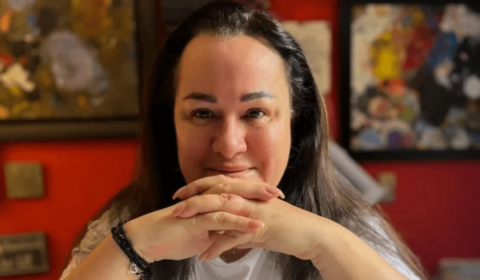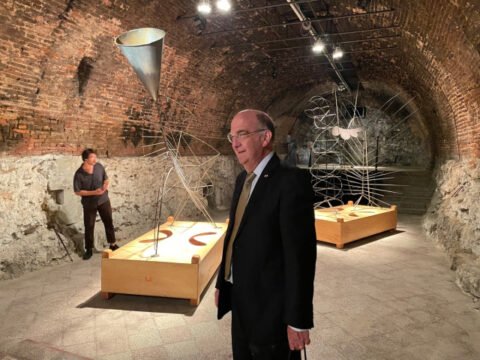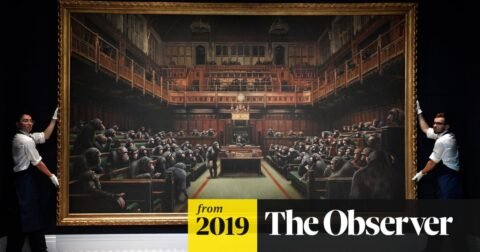From acquiring the works of some of the world’s most significant contemporary artists, raising awareness about the incredible art and culture that define the continuity of South Asian identity, to building multidisciplinary experience centres, Kiran Nadar, founder and chairperson of Kiran Nadar Museum of Art (KNMA), has profoundly shaped and inspired the art world. In an interview with Vaishali Dar, she talks about collecting art, KNMA’s upcoming museum, India’s art market and more. Edited excerpts:
Collecting art from all over the world has been your first love. What prompted you to start this?
I began seriously collecting around the 1990s. Over the years, as my passion and curiosity for art grew, so did my collection. Eventually, I decided to share this vast collection with the public, rather than keeping it stored away. This led to the creation of the first KNMA in Noida in January 2010, followed by the second at Saket in January 2011. I was also acutely aware of the existing dearth of institutional spaces that could bring visibility to art. I realised that my passion lay in raising awareness for the incredible art and culture that define the South Asian identity. The process was very organic and the more I collected the more I felt the need to share.
There is a constant dialogue between cultures, and artists serve as the most eloquent bridges for understanding these connections. This led me to acquire works by some of the world’s most significant contemporary artists, presenting them alongside the nest that South Asia has to offer.
KNMA’s new museum is due to open in 2027 and will include the performing arts. Could you tell us more about the new project? Would you also include some changes to the Saket museum as KNMA completes 15 years this year?
My vision for KNMA is to see it evolve into a dynamic, inclusive cultural hub where art is not just admired but truly experienced by all. The new KNMA building, set to open in the next two to three years, will be the heart of this vision. With state-of-the-art galleries, performing arts venues, and spaces dedicated to education and community engagement, it will serve as a platform for larger exhibitions and programmes, international collaborations, and multidisciplinary experiences. Expanding from 35,000 sq ft to 1 million sq ft is simultaneously daunting, exciting, and challenging. We will evaluate the future of the Saket space once the new building is operational, as it’s premature to make those decisions at this stage.
Your association with MF Husain has been very special which includes his prestigious works in your personal collection, bringing back his Untitled (Gram Yatra) artwork at the Christie’s sale recently or putting up an immersive show last year to coincide with the 60th edition of the Venice Biennale. What is the most striking quality of the artist that you have admired all these years?
During my early years of collecting, I was drawn to the modern masters, in particular SH Raza, FN Souza, Rameshwar Broota and MF Husain. Husain was one of the first artists my husband and I collected, Mother Teresa and Mahabharata, the latter of which I still have in my house. My connection with Husain extended far beyond the collector’s lens. I admired him deeply, and over the years, we developed a long and warm friendship.
What struck me most was his extraordinary vision, his ability to capture the soul of India in all its complexity and colour. His work spans such a vast and diverse range, yet I’ve always found myself more drawn to his earlier pieces, where the energy feels particularly raw and unfiltered. KNMA has over 200 artworks of the artist in its holding.
The Rooted Nomad: MF Husain in Venice presented alongside the 60th edition of La Biennale di Venezia was a dual-format independent project, part exhibition and part immersive experience which became a major highlight, blurring the lines of time and space while addressing themes like migration, identity, and belonging. We felt strongly that Husain’s international recognition hadn’t yet matched the depth of his contribution to the Moderns and the Progressives. This project was our way of honouring his legacy on a global stage.
You have also made a conscious decision to refrain from exhibiting controversial artworks, one such example is of FN Souza’s Rape in an exhibition. Is there any specific reason?
At KNMA, we approach each exhibition with deep curatorial consideration, weighing the historical significance of a work, the narrative we’re constructing, and the experience we aim to create for our audiences. We are not averse to presenting provocative or challenging works. In fact, in past exhibitions like Stretched Terrains (2017), we have included several powerful pieces by Souza that explore artistic agency on gaze, subjectivity, unbinding prohibitions and understanding conflict. All works were displayed with sensitivity by elaborating the context. Over the years, our curatorial programming has evolved alongside our audiences. Our current exhibitions reflect our present values and positioning. When the next opportunity arises to present previously unshown works to the public, it will serve as both a curatorial decision and an institutional statement regarding our stance on such matters.
The biggest market for Indian art is India. How can that change, so that Indian artists get better recognition and value among a global audience as well?
India’s art market has grown substantially. It is very evident from the rising interest and recognition from individual collectors and international institutions. However, deeper and expansive global recognition requires consistent international exposure through interaction with institutions and museums, participation in biennales, and institutional shows, which in turn requires more public-private collaborations.
Indian art has imparted a unique sensibility to the global audience across decades in varying magnitudes. To further expand and intensify its presence in the global art scene, the artistic practices need to be brought forth with a focus on their exclusivity, and artistic stances that are transforming perceptions on art and culture.
At the same time, it is heartwarming to see a growing number of private organisations working to bring South Asian art onto a global platform. Serendipity, Kochi Biennale, MAP in Bangalore and most recently the Hampi Arts Lab are all wonderful contributors to this cause.
Are more youngsters now beginning to collect art as an investment or appreciating it, and understanding its cultural relevance? Would you have any specific advice for the young collectors/ investors?
I’m encouraged to see more young collectors entering the art world, not just as buyers, but also as an interactive audience engaging with the work. We can see this in the enthusiastic responses to India Art Fair and Art Mumbai, and the increase in first-time buyers. I always advise them to look beyond just financial considerations—collect what genuinely appeals to you. Art should be something you want to live with and appreciate daily, not just an investment locked away. Start by understanding what resonates with you personally, then grow that interest with patience and commitment rather than chasing market trends.
We also see a significant gap in institutional support and infrastructure. Do you think there is enough government support / involvement in the art world?
While there’s a gap in institutional support and policy for the arts, I believe the path forward lies in collaboration. When we started KNMA 15 years ago, I envisioned it as part of a growing ecosystem of art institutions across India. Private initiatives have made important contributions, but sustainable growth requires partnership between collectors, institutions, and policymakers. I’m encouraged by the increasing dialogue between public and private sectors in recent years. Together, we can develop models that combine government infrastructure with private expertise and resources. The growing global interest in Indian art presents a perfect opportunity for this collaborative approach, allowing us to position our rich artistic heritage prominently on the world stage while making it more accessible to everyone in India.






